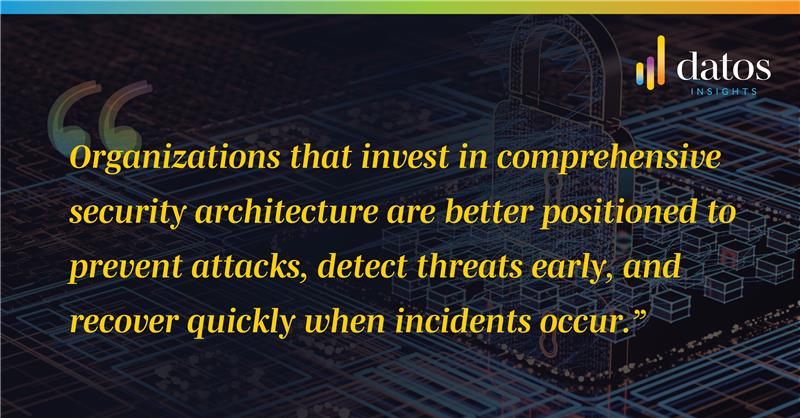The insurance industry is facing an unprecedented wave of cyberattacks, with recent incidents at Erie Insurance and Philadelphia Insurance Companies (PHLY) serving as stark reminders of the critical vulnerabilities that exist within the sector. These attacks, attributed to the notorious Scattered Spider ransomware group, have left thousands of customers without access to essential services and demonstrate why comprehensive security architecture is no longer optional—it’s a business imperative.
Coordinated Attacks Reveal Industry-Wide Vulnerabilities
In June 2025, two major insurance providers fell victim to what cybersecurity experts believe were coordinated attacks by Scattered Spider. Erie Insurance experienced a network outage beginning June 7 that lasted over ten consecutive days, completely disrupting customer access to online accounts, customer care services, and claims processing systems. Just two days later, PHLY detected suspicious network activity and proactively disconnected their systems, resulting in widespread outages affecting phone, email, and online applications.
The timing and sophistication of these attacks underscore a troubling reality: cybercriminals are increasingly targeting insurance companies because of their vast repositories of sensitive personal and financial data, combined with often outdated security infrastructures. The insurance sector processes massive amounts of personally identifiable information, making it an attractive target for ransomware groups seeking maximum impact and payoff.
Security Architecture: The Foundation of Cyber Resilience
Effective cybersecurity begins with robust security architecture that integrates protection measures throughout every layer of an organization’s technology infrastructure. Security design principles must be embedded from the ground up, encompassing network segmentation, zero-trust architectures, and defense-in-depth strategies.
Organizations that treat security as an afterthought rather than a foundational element consistently find themselves vulnerable to sophisticated attacks like those perpetrated by Scattered Spider. Modern security architecture requires a holistic approach that considers not just technical controls, but also human factors, business processes, and regulatory compliance requirements. This comprehensive framework serves as the blueprint for all subsequent security initiatives and ensures that protective measures work cohesively rather than in isolation.

Seven Critical Security Processes Every Insurer Must Master
Security governance forms the backbone of any effective cybersecurity program. This involves establishing clear policies, procedures, and accountability structures that define how security decisions are made and implemented across the organization. Governance ensures that security investments align with business objectives and that there is executive-level oversight of cybersecurity risks.
Security engineering and access control represent the technical heart of cybersecurity defense. Implementing robust identity and access management systems, multi-factor authentication, and principle of least privilege access prevents unauthorized system access. The recent attacks demonstrate how quickly threat actors can move laterally through networks once initial access is gained, making strong access controls absolutely essential.
Maintenance and monitoring with patch management cannot be overlooked in today’s threat landscape. Many successful cyberattacks exploit known vulnerabilities that could have been prevented through timely patching. Continuous monitoring systems provide real-time visibility into network activity, enabling security teams to detect anomalous behavior before it escalates into a full breach. Both Erie Insurance and PHLY were able to detect suspicious activity, but the extensive downtime required for remediation suggests that earlier detection and response capabilities could have minimized impact.
Security incident response planning is crucial for minimizing damage when attacks occur. Organizations need well-rehearsed procedures for containing threats, preserving evidence, notifying stakeholders, and restoring operations. The complexity and duration of the recovery efforts at both insurance companies highlight the importance of detailed incident response plans that account for various attack scenarios.
Security awareness and phishing prevention address the human element of cybersecurity. Employees often serve as the first line of defense against social engineering attacks, which Scattered Spider is known to employ. Regular training programs help staff recognize and report suspicious communications, reducing the likelihood of successful initial compromise.
Computer forensics capabilities enable organizations to understand the scope and impact of security incidents. Following an attack, forensic analysis helps determine what data may have been compromised, how the attackers gained access, and what improvements are needed to prevent similar incidents. Both affected insurance companies engaged external cybersecurity experts to conduct thorough forensic investigations.
Security communication ensures that all stakeholders understand the organization’s security posture and their role in maintaining it. This includes regular reporting to executives and boards, transparent communication with customers during incidents, and coordination with law enforcement and regulatory bodies when required.
Building Resilience Through Architecture
The insurance industry must move beyond reactive security measures to embrace proactive, architecture-driven approaches. This means designing systems with security controls integrated from the start, implementing redundancy and fail-safe mechanisms, and establishing robust backup and recovery procedures. Organizations that invest in comprehensive security architecture are better positioned to prevent attacks, detect threats early, and recover quickly when incidents occur.
The Scattered Spider attacks serve as a wake-up call for the entire insurance sector. As these threat actors continue to evolve their tactics and target critical infrastructure, insurance companies must prioritize security architecture that addresses both current threats and future challenges.
The cost of comprehensive security implementation pales in comparison to the operational, financial, and reputational damage caused by successful cyberattacks. Moving forward, insurance companies must view cybersecurity not as a cost center, but as a fundamental business enabler that protects customer trust and ensures operational continuity in an increasingly dangerous digital landscape.
The experts at Datos Insights help insurance companies build resilient security architectures that protect against evolving threats while supporting business growth. Email me at [email protected], or John Horn at [email protected], if you would like to talk further about the current incident or your security program in general.

